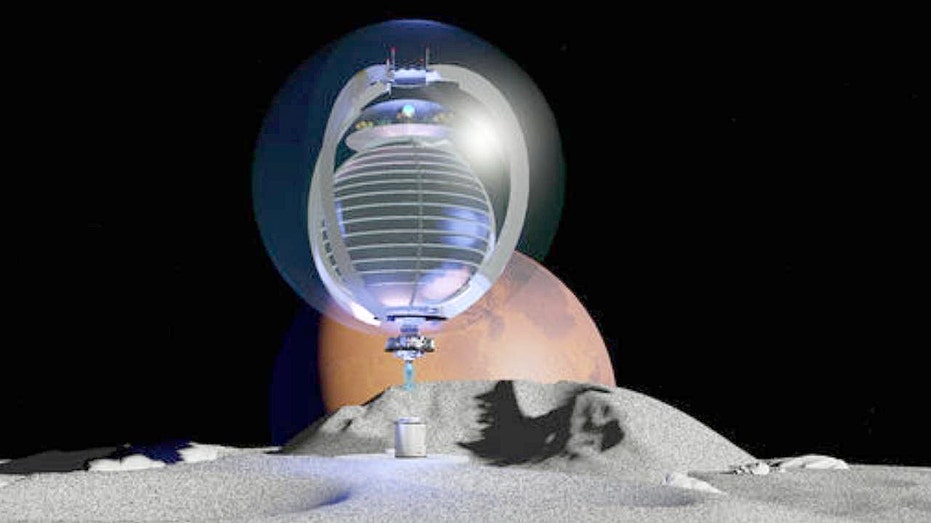Science
NASA and Skyeports Pioneer Glass Cities for Lunar Living

NASA is collaborating with California-based company Skyeports to explore the innovative concept of creating habitable glass spheres on the Moon. This initiative envisions a future where astronauts reside in glowing, transparent habitats, effectively turning lunar dust into sustainable living spaces.
Under the partnership, engineers aim to transform lunar regolith, the powdery material covering the Moon’s surface, into durable glass. By utilizing microwave furnaces, the regolith can be melted and shaped into large spheres. This method not only utilizes local materials, thereby reducing transportation costs, but also opens the door to sustainable construction practices on the Moon.
Transforming Lunar Dust into Living Spaces
The process developed by Skyeports involves heating lunar dust until it melts and expands, forming a bubble that cools into a solid, transparent shell. These robust spheres could eventually serve as both living and working environments for astronauts. The design incorporates unique features, such as pipes that will serve as entrances, and 3D printers that will produce necessary furniture from lunar materials.
The spherical architecture is particularly advantageous for withstanding the harsh lunar environment. The shape evenly distributes pressure, enhancing strength and durability, which is crucial for protecting inhabitants from micrometeorites and extreme temperatures.
Self-Sustaining Ecosystems on the Moon
Beyond basic shelter, these glass habitats are designed to function as self-sustaining ecosystems. The glass structure is capable of self-repairing minor cracks caused by external impacts. Integrated solar panels will provide a renewable energy source, while temperature regulation systems may facilitate condensation, supporting plant growth. This innovation could ultimately allow for oxygen, water, and food production within each habitat.
Dr. Martin Bermudez, CEO of Skyeports, notes that current prototypes measure just a few inches across, but future iterations could span up to 1,640 feet. His vision includes a network of interconnected glass cities across the lunar landscape, linked by transparent bridges.
NASA’s Innovative Advanced Concepts program is backing this research as part of its broader goal to establish long-term human presence on the Moon as outlined in the Artemis mission. This mission aims to return humans to the Moon in the near future, making the development of safe and sustainable habitats a priority.
Plans for testing these glass sphere habitats include initial experiments in a thermal vacuum chamber, followed by flights that simulate microgravity conditions. Future trials aboard the International Space Station will assess the feasibility of the glassblowing technique in space, with potential lunar surface tests occurring within the next few years.
The implications of this research extend beyond lunar exploration. The techniques utilized in developing these habitats may inform sustainable building practices on Earth. If successful, this project could inspire eco-friendly architectural designs that prioritize energy efficiency and minimal environmental impact.
In summary, the collaboration between NASA and Skyeports signifies a significant advancement in humanity’s journey toward establishing permanent life beyond Earth. The integration of science, design, and innovative materials could pave the way for future communities on the Moon, representing a remarkable step towards living in space.
-

 Science2 months ago
Science2 months agoInventor Achieves Breakthrough with 2 Billion FPS Laser Video
-

 Health2 months ago
Health2 months agoCommunity Unites for 7th Annual Into the Light Walk for Mental Health
-

 Top Stories2 months ago
Top Stories2 months agoCharlie Sheen’s New Romance: ‘Glowing’ with Younger Partner
-

 Entertainment2 months ago
Entertainment2 months agoDua Lipa Aces GCSE Spanish, Sparks Super Bowl Buzz with Fans
-

 Health2 months ago
Health2 months agoCurium Group, PeptiDream, and PDRadiopharma Launch Key Cancer Trial
-

 Top Stories2 months ago
Top Stories2 months agoFormer Mozilla CMO Launches AI-Driven Cannabis Cocktail Brand Fast
-

 World2 months ago
World2 months agoIsrael Reopens Rafah Crossing After Hostage Remains Returned
-

 Entertainment2 months ago
Entertainment2 months agoMother Fights to Reunite with Children After Kidnapping in New Drama
-

 World2 months ago
World2 months agoR&B Icon D’Angelo Dies at 51, Leaving Lasting Legacy
-

 Business2 months ago
Business2 months agoTyler Technologies Set to Reveal Q3 Earnings on October 22
-

 Health2 months ago
Health2 months agoYouTube Launches New Mental Health Tools for Teen Users
-

 Health2 months ago
Health2 months agoNorth Carolina’s Biotech Boom: Billions in New Investments








